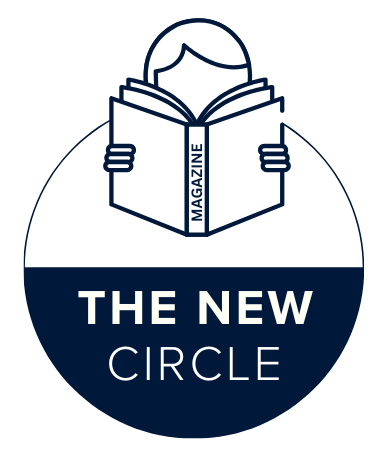The development of a highly skilled and confident workforce is a primary objective for any successful organization. Yet, conventional training methods often fall short of this goal, struggling with issues of learner engagement, knowledge retention, and the effective transfer of skills to the workplace. A new generation of learning technologies is directly addressing these challenges. Immersive learning, through Virtual Reality (VR) and Augmented Reality (AR), offers a powerful and practical solution by shifting the focus from passive information consumption to active, hands-on experience. These technologies are not theoretical concepts for the future; they are proven tools being deployed today to solve critical business problems, enhance employee performance, and deliver a quantifiable return on investment.
The Deficiencies of Traditional Training Paradigms
For years, the foundation of corporate learning and development (L&D) has been a mix of instructor-led sessions, static eLearning modules, and dense operational manuals. While these methods can introduce concepts, they are fundamentally limited in their ability to build durable skills. The primary issue is the passive nature of the learning process. An employee listening to a lecture or clicking through a slide presentation is not actively problem-solving or applying new knowledge in a realistic context.
This leads directly to the well-documented problem of knowledge decay, often described by the “forgetting curve.” Without immediate and repeated application, the majority of information imparted in a traditional training session is lost within weeks. Furthermore, these methods are difficult to scale effectively. Flying technicians to a central facility for hands-on training on new equipment is logistically complex and carries immense costs in travel, accommodation, and lost productivity. Replicating high-stakes scenarios, such as emergency responses or delicate customer negotiations, is nearly impossible in a classroom, leaving employees unprepared for real-world pressures. These deficiencies create a compelling need for training solutions that are more engaging, repeatable, and directly applicable to an employee’s role.
Virtual Reality (VR): Creating Environments for Mastery
Virtual Reality provides a direct solution to the limitations of physical training by immersing employees in a computer-generated, 3D environment. Through a VR headset, a user is fully absorbed in a simulated scenario, allowing them to interact with virtual equipment, environments, and avatars as if they were real. This creates an unparalleled opportunity for risk-free practice and skill mastery. The core value of VR training is its ability to provide a space for experiential learning, where employees learn by doing.
VR is exceptionally effective for training in situations that are dangerous, expensive, or difficult to replicate. For instance, in the manufacturing and energy sectors, employees can practice complex lockout/tagout procedures on hazardous machinery without any physical risk. This builds not only procedural knowledge, but also the muscle memory required to perform these tasks correctly and safely every time. Similarly, VR allows for the development of soft skills through realistic simulations. A new manager can practice giving difficult feedback to a reactive AI-powered avatar, learning to manage the conversation’s emotional dynamics in a private setting where mistakes become learning opportunities rather than public errors.
The effectiveness of this approach is supported by extensive data. Research from firms like PwC shows that learners in VR are up to 275% more confident to act on what they learned after training and can be trained up to four times faster than in a traditional classroom. This accelerated path to proficiency is a result of the focused, distraction-free nature of VR and its capacity to engage learners on a deeper cognitive and emotional level. Organizations can deploy a single, expertly designed VR module across a global workforce, ensuring absolute consistency in training quality and procedural standards.
Augmented Reality (AR): Integrating Knowledge into the Workflow
While VR creates entirely new digital worlds, Augmented Reality enhances the physical one. AR technology overlays digital information—such as text instructions, 3D diagrams, or video—onto a user’s view of their actual surroundings, typically via a smartphone, tablet, or smart glasses. This transforms AR from a training tool into a powerful performance support system that provides real-time, contextual guidance directly within the workflow.
The strategic advantage of AR is its ability to minimize the gap between learning and application. An employee does not need to recall information from a training session that happened weeks ago; the information is presented to them at the precise moment of need. Consider a technician servicing a complex piece of equipment. Using a tablet with an AR application, they can point the camera at the machine and see key components highlighted, with relevant data and step-by-step repair instructions appearing on the screen. This immediate access to information reduces cognitive load, minimizes errors, and empowers employees to complete tasks more efficiently and accurately.
This just-in-time guidance is also a highly effective form of microlearning. Instead of long-form training courses, AR delivers focused, bite-sized knowledge to solve a specific problem. In logistics and warehousing, employees using AR glasses can be guided to the correct item for an order, with visual cues confirming they have picked the right product. Case studies from companies like Boeing have shown that using AR to guide technicians through the complex process of installing electrical wiring in aircraft resulted in a significant reduction in assembly time and virtually eliminated errors. AR empowers employees by making institutional knowledge instantly accessible, turning every task into a potential learning opportunity.
The Business Case: Quantifying the Effectiveness of Immersive Learning
The adoption of VR and AR in corporate training is propelled by clear, quantifiable business outcomes. These technologies are not merely an investment in innovation but an investment in operational excellence.
- Accelerated Proficiency: By enabling active practice, immersive learning drastically reduces the time it takes for employees to master new skills. This leads to faster onboarding, quicker deployment of employees into productive roles, and a more agile workforce capable of adapting to new processes and technologies.
- Reduced Operational Costs: Immersive training delivers substantial savings by cutting the need for employee and instructor travel, physical training materials, and the shipping of heavy equipment. Furthermore, by reducing on-the-job errors, companies save on costs associated with rework, material waste, and industrial accidents.
- Enhanced Safety and Compliance: VR allows employees to build experience in handling hazardous situations without any real-world risk. This leads to a measurable reduction in workplace safety incidents. For regulatory and compliance training, immersive platforms provide a detailed record of an employee’s performance, offering a robust audit trail.
- Data-Driven Performance Insights: A key advantage of these digital platforms is the ability to capture detailed analytics on learner performance. Training managers can track task completion times, identify common points of failure, and assess decision-making processes. This data provides objective insights into individual and team competency gaps, allowing for targeted coaching and continuous improvement of the training content itself.
A Framework for Strategic Adoption
Successfully implementing an immersive learning program requires a strategic approach that aligns the technology with specific organizational goals.
First, it is vital to identify a clear and compelling use case. Rather than a broad, technology-first approach, the most successful initiatives begin by targeting a specific business problem. This could be a high error rate in a critical assembly process, a need to improve the soft skills of customer-facing teams, or a mandate to enhance safety procedures. A focused pilot project allows the organization to prove the concept, measure its impact, and build a case for a wider rollout.
Second, the quality of the content is paramount. The technology is only the delivery mechanism; the effectiveness of the training depends on high-quality instructional design. Custom content developed in partnership with learning experts ensures that simulations are realistic, engaging, and directly tied to the organization’s unique operational realities and learning objectives.
Finally, planning for scalability is essential for long-term success. This includes considerations for hardware logistics, device management, and a centralized platform for deploying content and analyzing learner data. By starting with a defined business need and focusing on expertly designed content, organizations can ensure their investment in VR and AR moves beyond experimentation to become a core component of their L&D strategy, building a more capable and confident workforce.
READ ALSO: What Is a VPN? Your Essential Guide to Online Privacy

